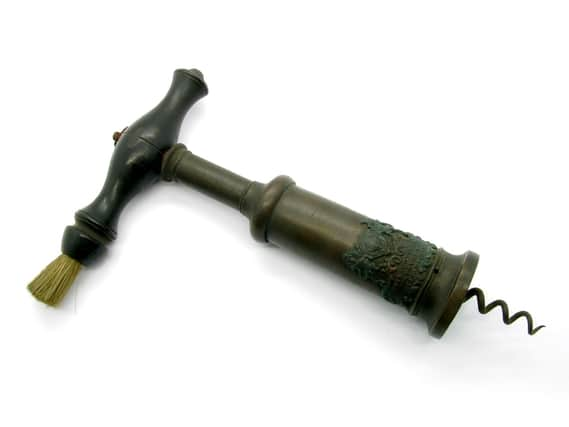Antiques: The history of the humble corkscrew


Worldwide there are a thousand patents for different types of bottle openers, but the most common remains the corkscrew. There are essentially two types; the straight pull, which relies on strength and the mechanical versions which are more sought after and more valuable.
The interest in corkscrews comes from a mixture of things, including the mechanism used such as levers, crank handles and complex concertina styles, the handles made in a variety of materials and their individual style including decorative form and advertising.
Advertisement
Hide AdAdvertisement
Hide AdCorkscrews are thought to date from as early as the 1400’s but it wasn’t until 1795 that the first English corkscrew patent was taken out by the Rev Samuel Henshall. It had a T-shaped straight pull which included a disk now known as the Henshall button between the worm and the shank. The disk prevented the worm going too deep into the cork and was of a slightly concave shape on the underside which stopped the cork from breaking apart. Early versions of the corkscrew are very rare and can be extremely valuable.
The next innovation came from Edward Thomason. His corkscrew used nested screws which turned in opposite directions and was patented in 1802.
Corkscrews in the 19th century were often commissioned by members of the high society who asked artisans to create a personalised corkscrew. These were real works of art using gold and silver and inset with precious stones and are really sort after today.
Throughout the 19th century many patents were taken out for a variety of different corkscrews. Examples to look out for include Robert Jones design of 1840, which has a brass 'worm' or screw and three prongs to pierce and grip the cork. Robert’s design enjoyed limited success in its day, probably because like many of today's tin openers, it didn't work very well. Today however it is a rare and valuable find, sometimes realising more than four figure sums in auction, if intact and in good condition.
Advertisement
Hide AdAdvertisement
Hide AdAnother example is the ‘Walter’s Friend’ sometimes known as the ‘Sommeliers Knife’ or ‘Butler’s Friend’ patented in 1882. Invented by a German called Carl Weinke. It was shaped like a pocket knife of slim foldable form. It has a single lever and screw along with a handle that makes use of the bottle’s side as leverage to be able pull out the cork.
Antique corkscrews often have the manufacture’s markings and badges on a small panel attached to the side followed by a model number. Why not start a collection by a particular maker or type of design. As in most areas of collecting condition is key. Scratches and rust will affect the value always buy the best you can afford.
Novelty and advertising corkscrews are also highly collectable. Examples include corkscrews in the form of ladies legs often wearing striped pantaloons, fish handled corkscrews or those advertising products or services.
Corkscrews of the twentieth century are less valuable, due to the simpler less appealing designs and the volume of their production, but they would be a good place to start a collection. Unusual examples with fine mechanisms or beautifully crafted versions are always worth watching out for.